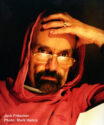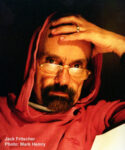STAY TUNED!
TELEVISION TODAY
AND 50 YEARS AGO
Principles of Critical Thinking
Taught to Each Generation
(Fake News Never Dies)
This book, written in 1970 when a pre-Watergate Richard Nixon was president, and republished during the 2020 occupation of the White House by Donald Trump, affirms that timeless principles of critical thinking do not change, nor does human behavior.
The necessity of critical thinking never goes away.
The goal for a person’s liberation from authoritarianism through education is the ability to interpret, understand, and survive the towering babble of people, media, politics, religion, art, and society.
In the 1960s, universities were the crucible of revolution and change.
That so angered conservative politicians that they have continued to today to systematically de-fund education from kindergarten to college because citizens schooled in critical thinking are a population of resistance and change that threatens their riches, religion, rule, and reasoning.
I wrote this book while teaching American literature on one of those progressive university campuses in the 1960s when film-crazy and politically active students enthusiastically diverted arts-and-ideas discussions of classic novels into discussions of current film and media.
They impelled me to reinvent my “Literary Interpretation” class by adding film/television as a fourth genre to fiction, poetry, and drama as a relevant way to teach principles of critical thinking freshened via the popular culture of movie and television screens.
In the half-century since, the names of people and titles of programs have changed, but the principles of critical thinking remain the same.
All of human life ends up on television.
My thanks continue through the years to Kevin Axe, acquisitions editor for the Today magazine, run by the still thriving Claretian Publications of Chicago, which in 1966 published my feature article, “What to Do at a ‘Dirty’ Movie,” aimed at helping traditional movie-goers interpret the value of the frank new art films of the 1960s.
Kevin and I had met as teenagers attending the same high school in the 1950s. In 1970, he commissioned my proposal for this book stylized for high-school students and teachers wanting to learn how to interpret the new dialogue, images, stereotypes, and archetypes in our media-saturated culture.
My thanks also to publisher Mark J. Brummel, C.M.F., editors R. J. Liskowski and Tom Hogan, and art director Ron Bean whose youthful design reflected the Pop Art of the 1960s. It was an honor they chose this to be the first issue of Today written by one author: Television Today, Volume 26, No. 2, February 1971.
—Jack Fritscher, 2020


